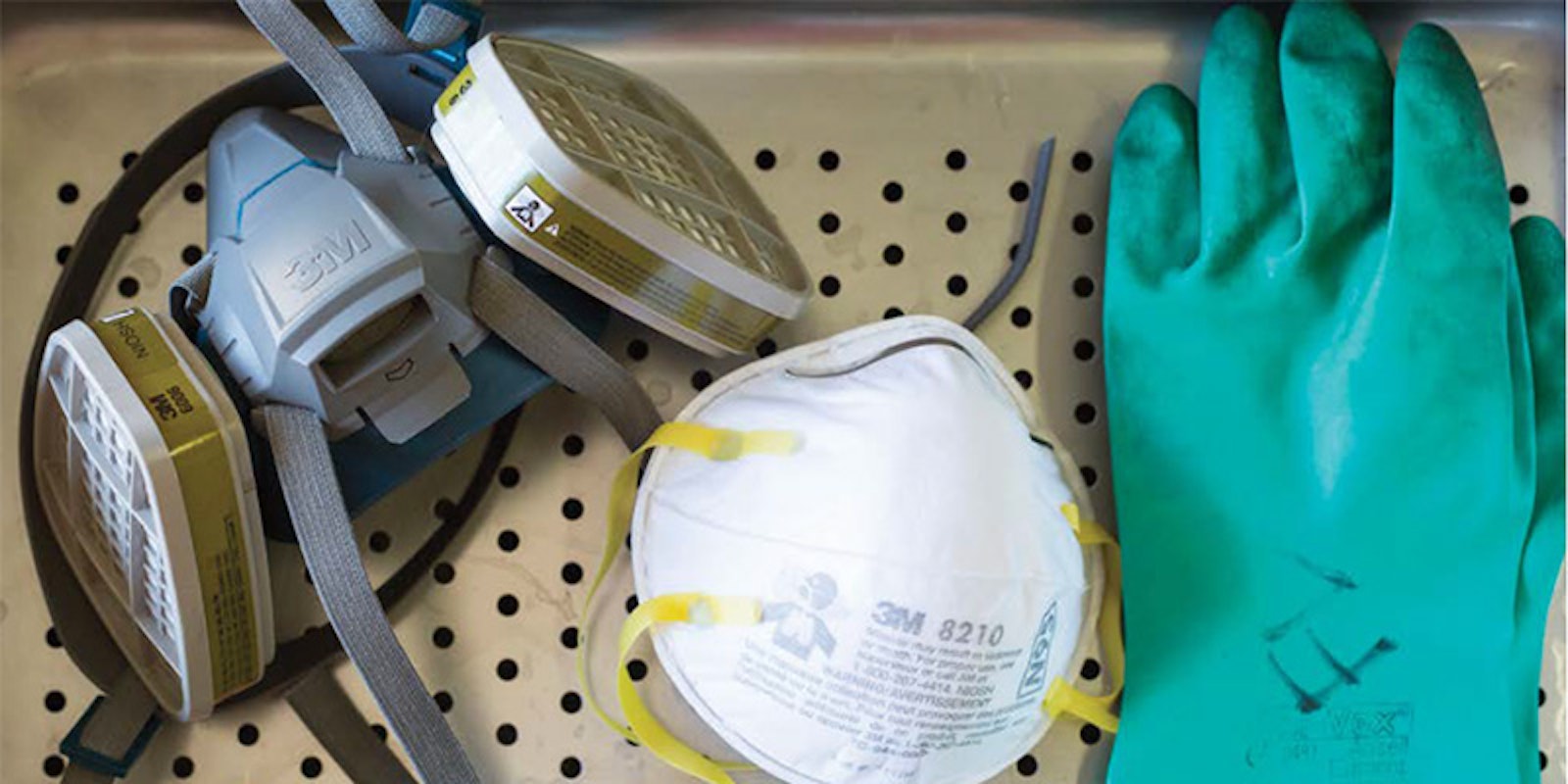Whether you spin, weave, knit, or crochet, at some point, the urge to dye fiber and yarn takes hold. In this excerpt from Dyeing to Spin and Knit, Felicia Lo emphasizes the importance of dyeing safety. No matter what dyeing technique you use, Felicia recommends a few key pieces of equipment and shares tips to protect your health and home.
Safety in the dye studio is essential to your health. The dyes and chemicals used by home dyers are generally nontoxic, but must still be handled with care. The handling of loose dye powder is the most hazardous aspect of dyeing, since the inhalation of dye chemicals can result in respiratory irritation and sensitization. In other words, you can develop an allergic response to dyes that manifests itself with asthma-like symptoms: shortness of breath, wheezing, and difficulty taking a full and complete breath. This reaction can worsen with repeated exposure until you get to the point where you may not be able to work with the dyes at all. Reduce the risk of inhalation by wearing a NIOSH-approved respirator or mask rated for use with powders and dust. This can help ensure a long relationship with the craft of hand-dyeing.
Dye powder is available to us as very fine dust that is easily spread. It’s difficult for the eye to see, but when you are working with dye powder, it can end up flying everywhere. Lay a damp paper towel under your dye mixing area to see just how much and how far the dye travels. You’ll be amazed. It goes everywhere. To prevent the migration of dye powder, keep open containers of dye powder away from drafty areas. Always wipe up spills—they become powder again once dry.
Low-water immersion or “hot pour” dyeing can create a more randomly dyed appearance.
Wear rubber gloves and an apron to protect your skin from direct contact with the dye solutions or auxiliary chemicals—even from possible absorption of airborne particles. My greatest pet peeve is seeing dyers with dye-stained fingers and hands. So much is absorbed through our skin, it only makes sense to minimize exposure as much as possible. Wear an apron or protective clothing that you can leave in the dye area so that you don’t transport stray dye.
Anything that you use for dyeing should not be used again for cooking. That includes any kitchen pots, cooking utensils, wooden spoons, measuring cups and spoons, stockpots, slow cookers, turkey roasters, and so on. If you are concerned about investing in a whole set of fancy pots and pans when you are just experimenting with dyeing, pick up inexpensive used equipment from your local secondhand or charity shop to use for your dyeing projects, and save your pretty kitchen stuff for cooking! Use only dedicated pots and utensils for dyeing. Some people like to dye with their microwave ovens or conventional ovens—again, these should be reserved for dyeing only. Do not use your home kitchen for dyeing.
And finally, never eat or drink in the dye area. Just as you wouldn’t use bathroom cleaner simultaneously while eating lunch, keep your food and drink away from your dye area.
—Felicia Lo


